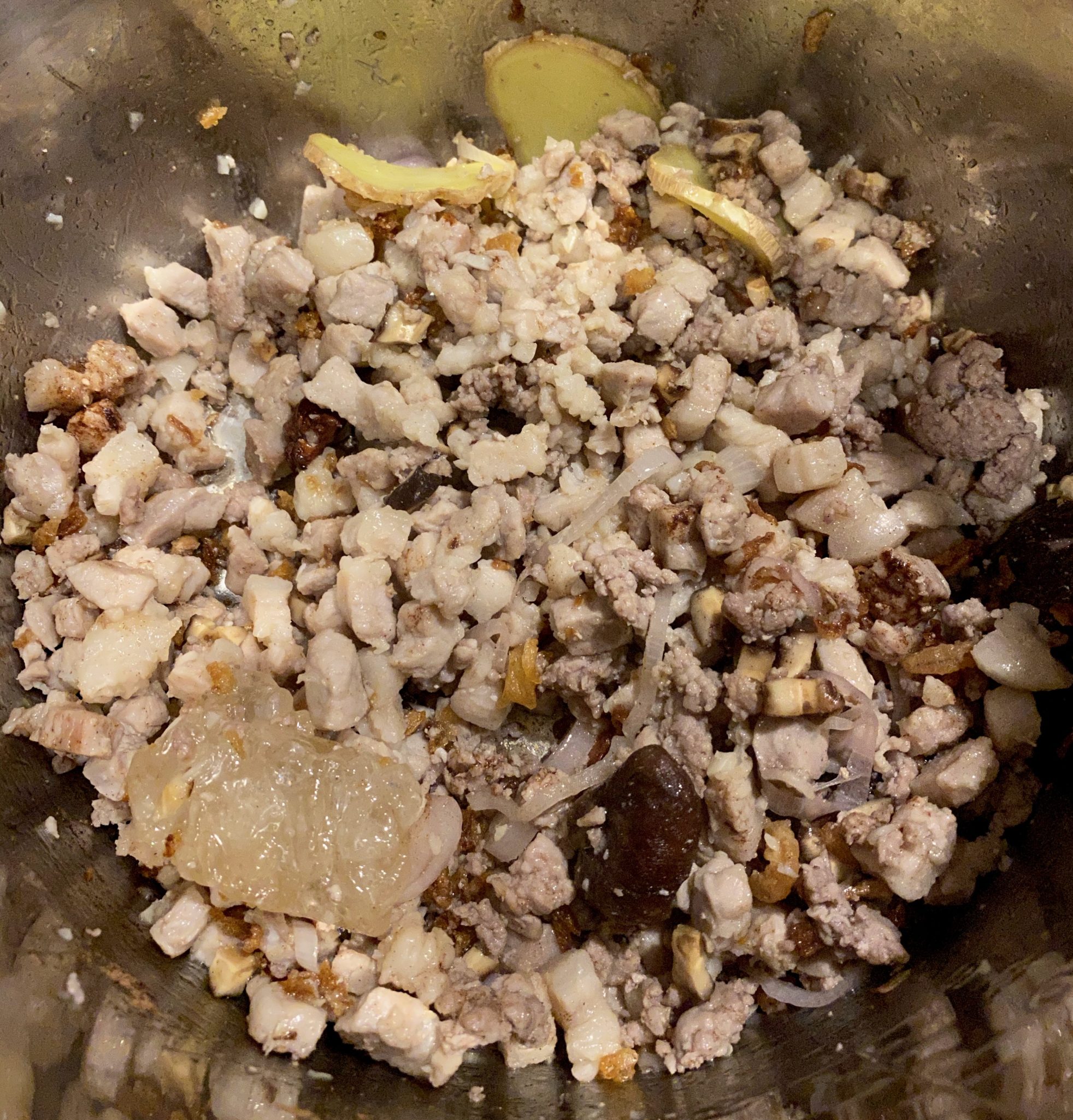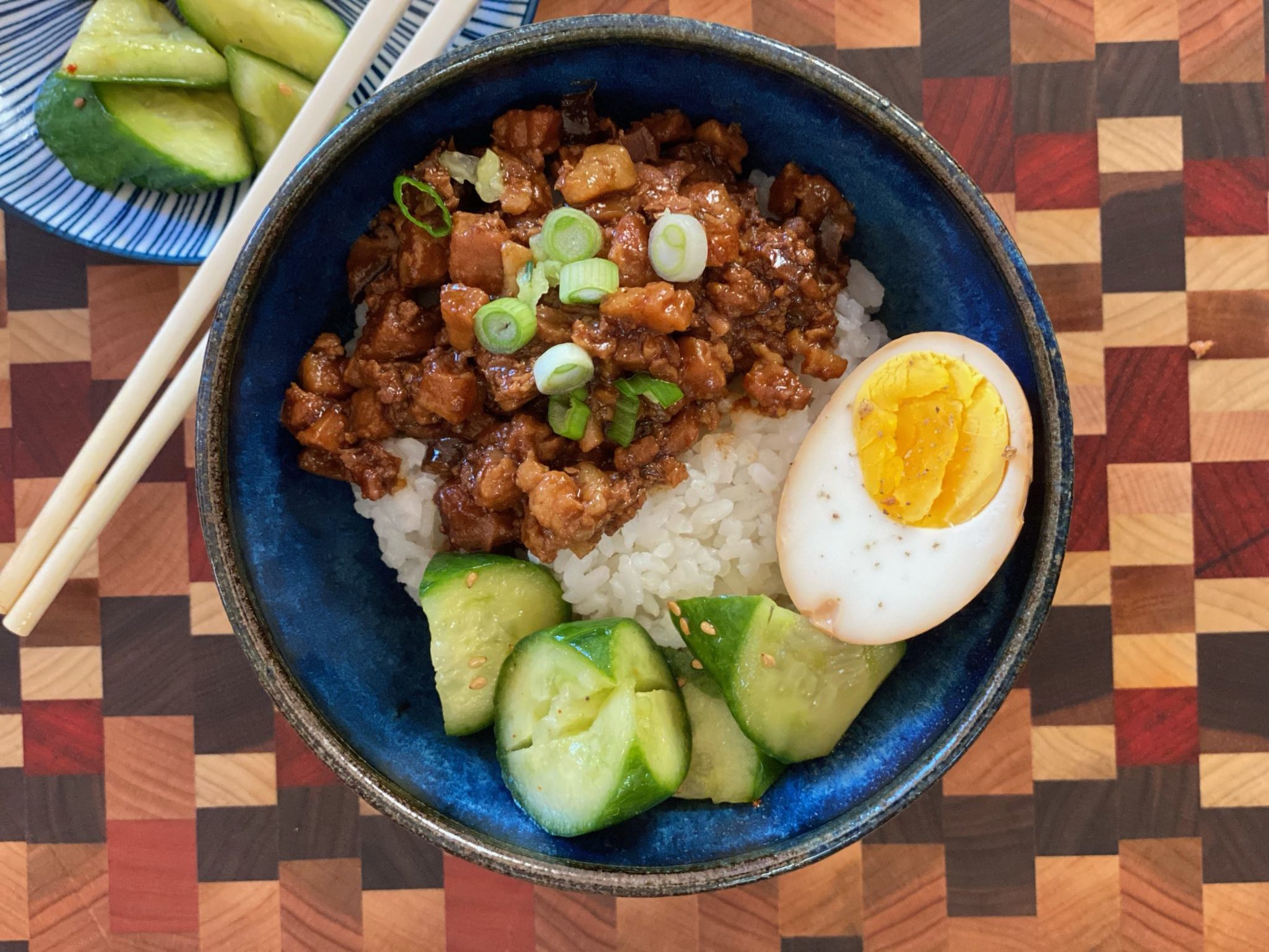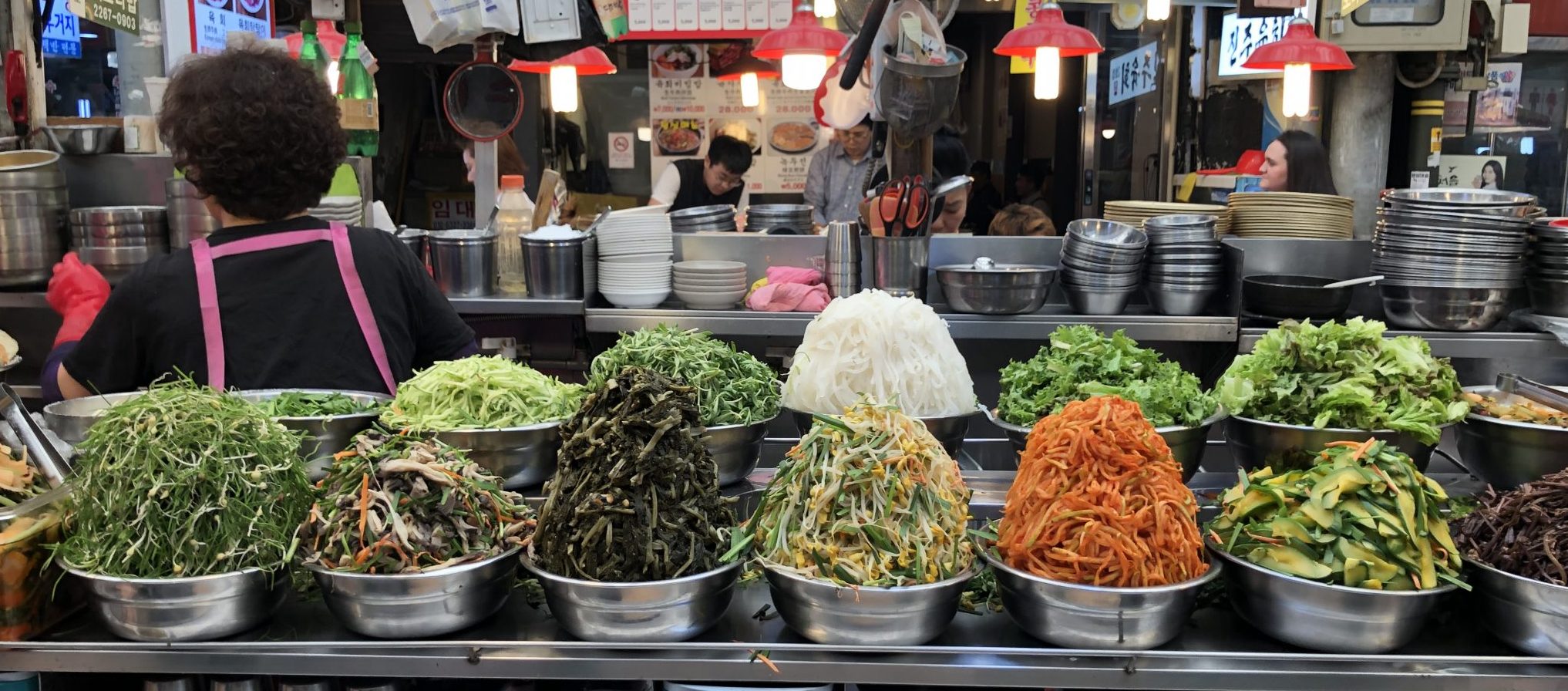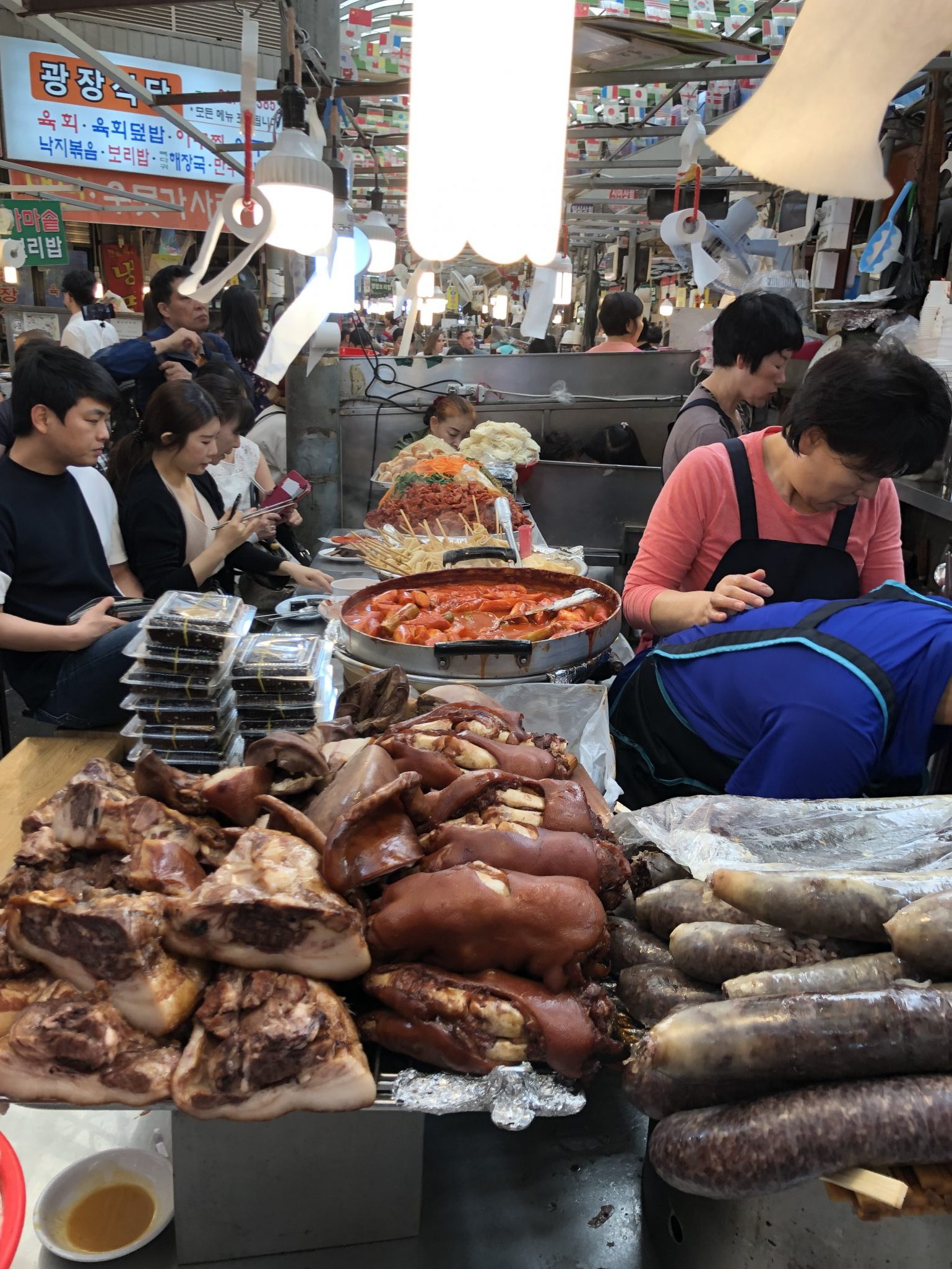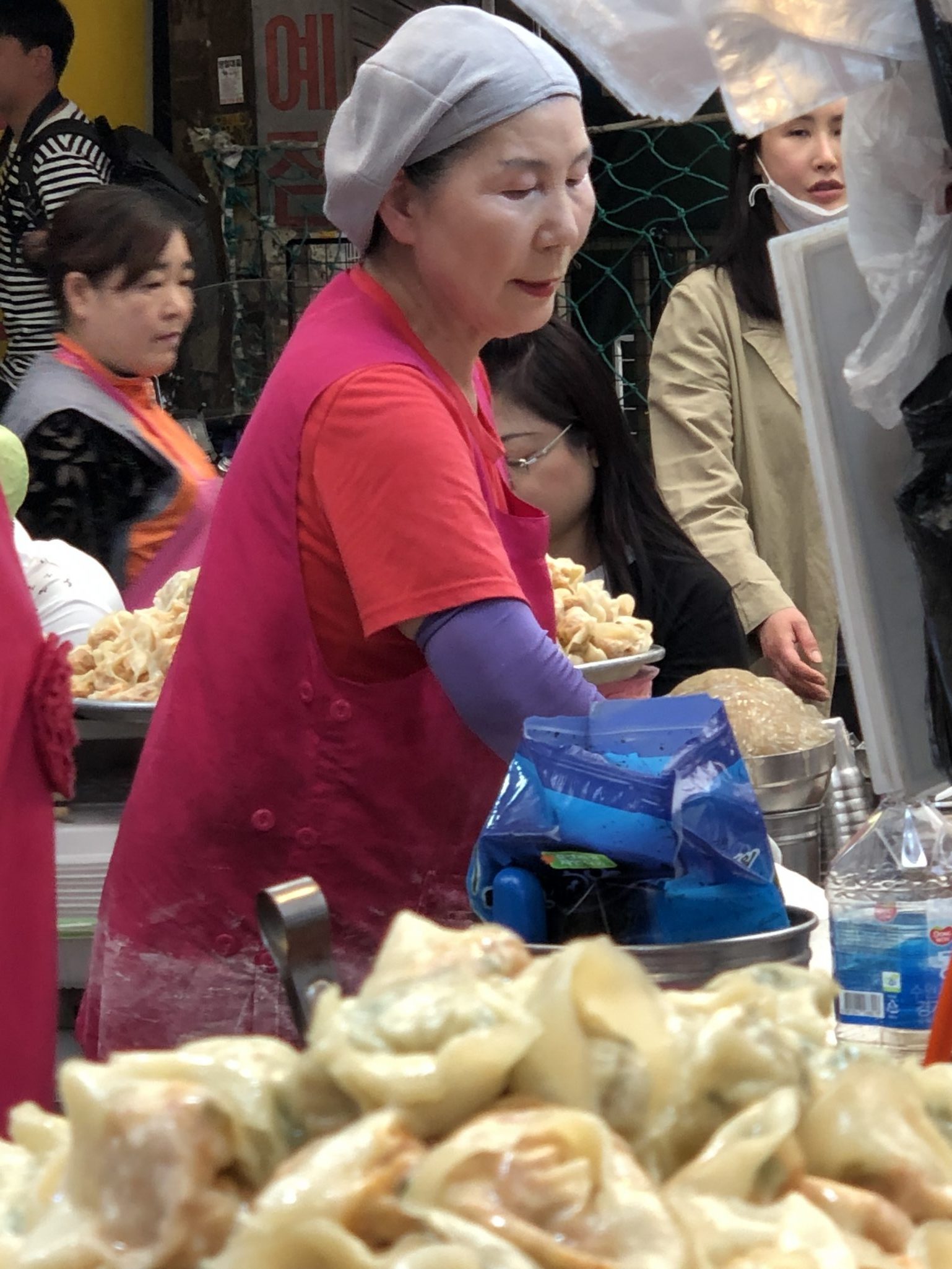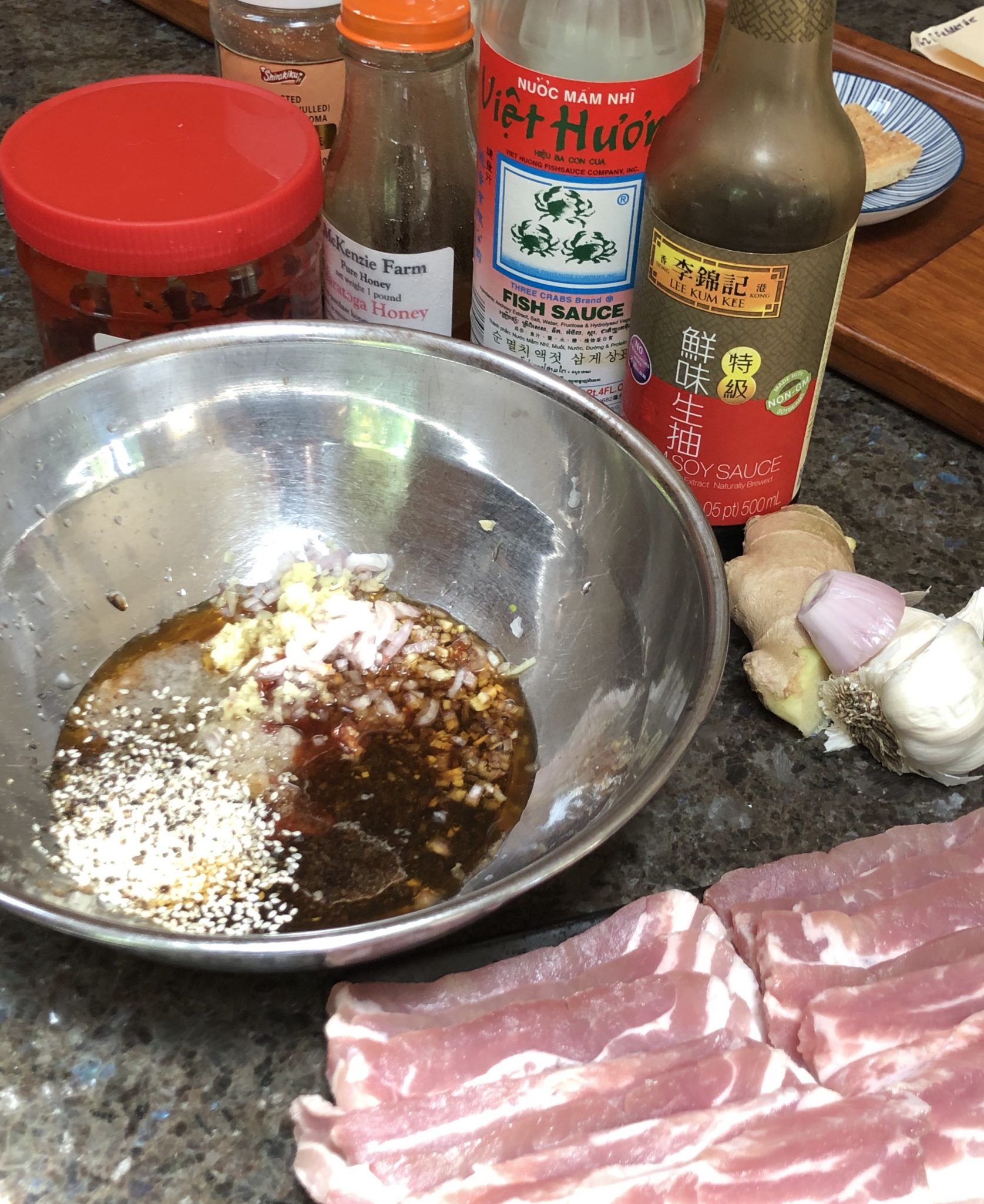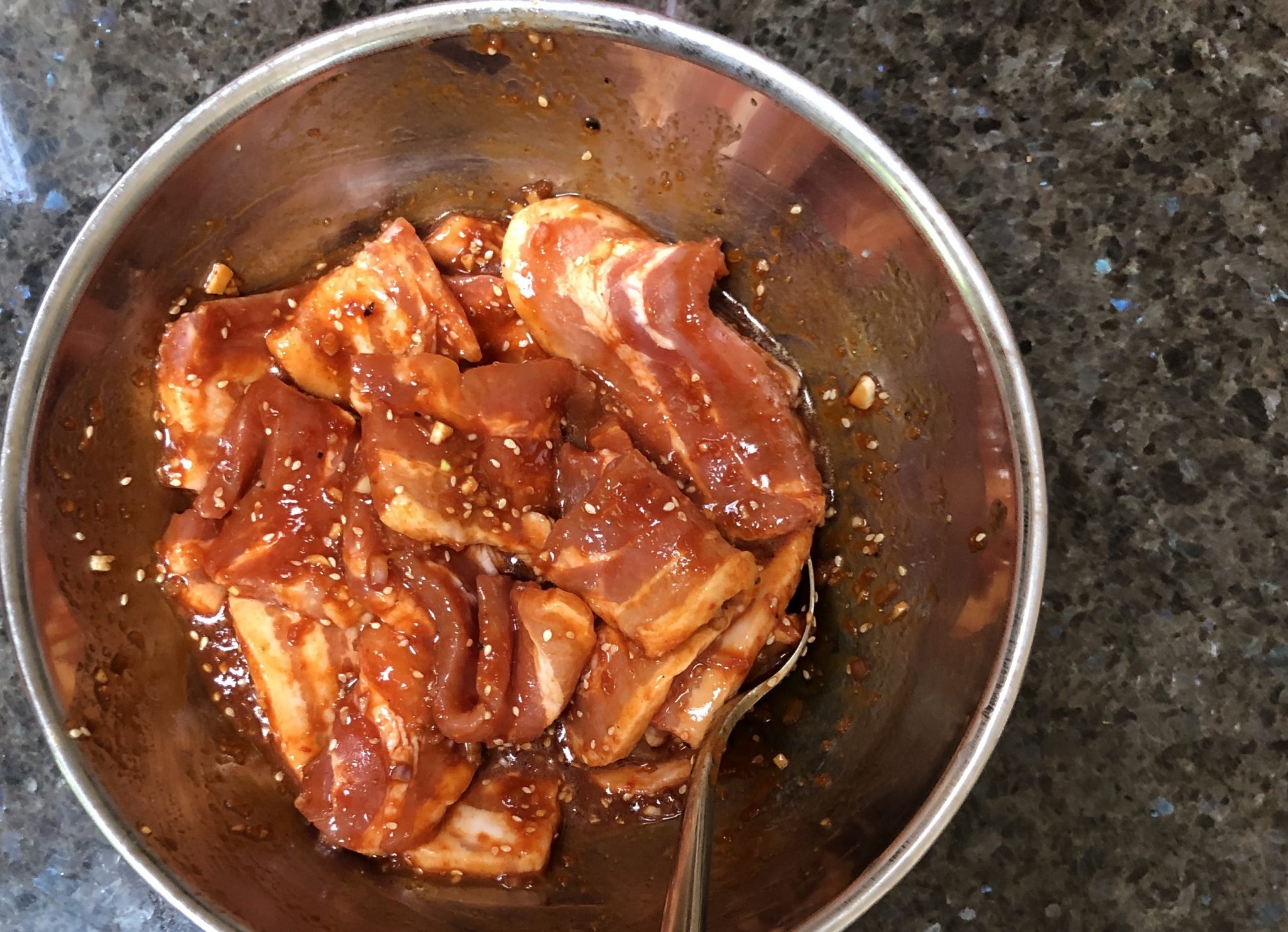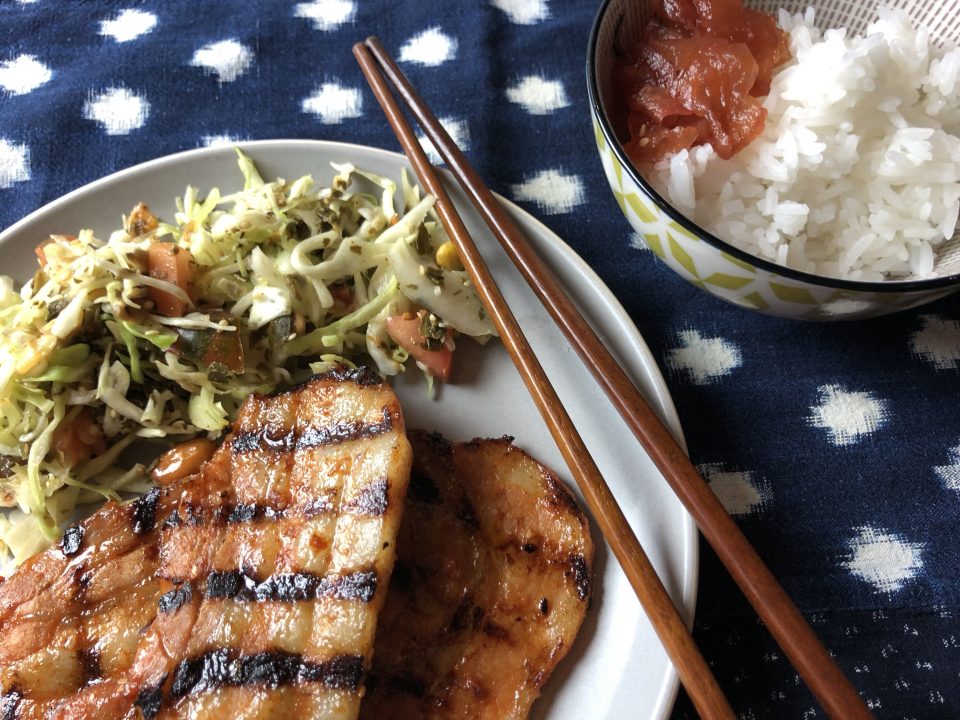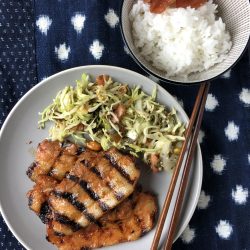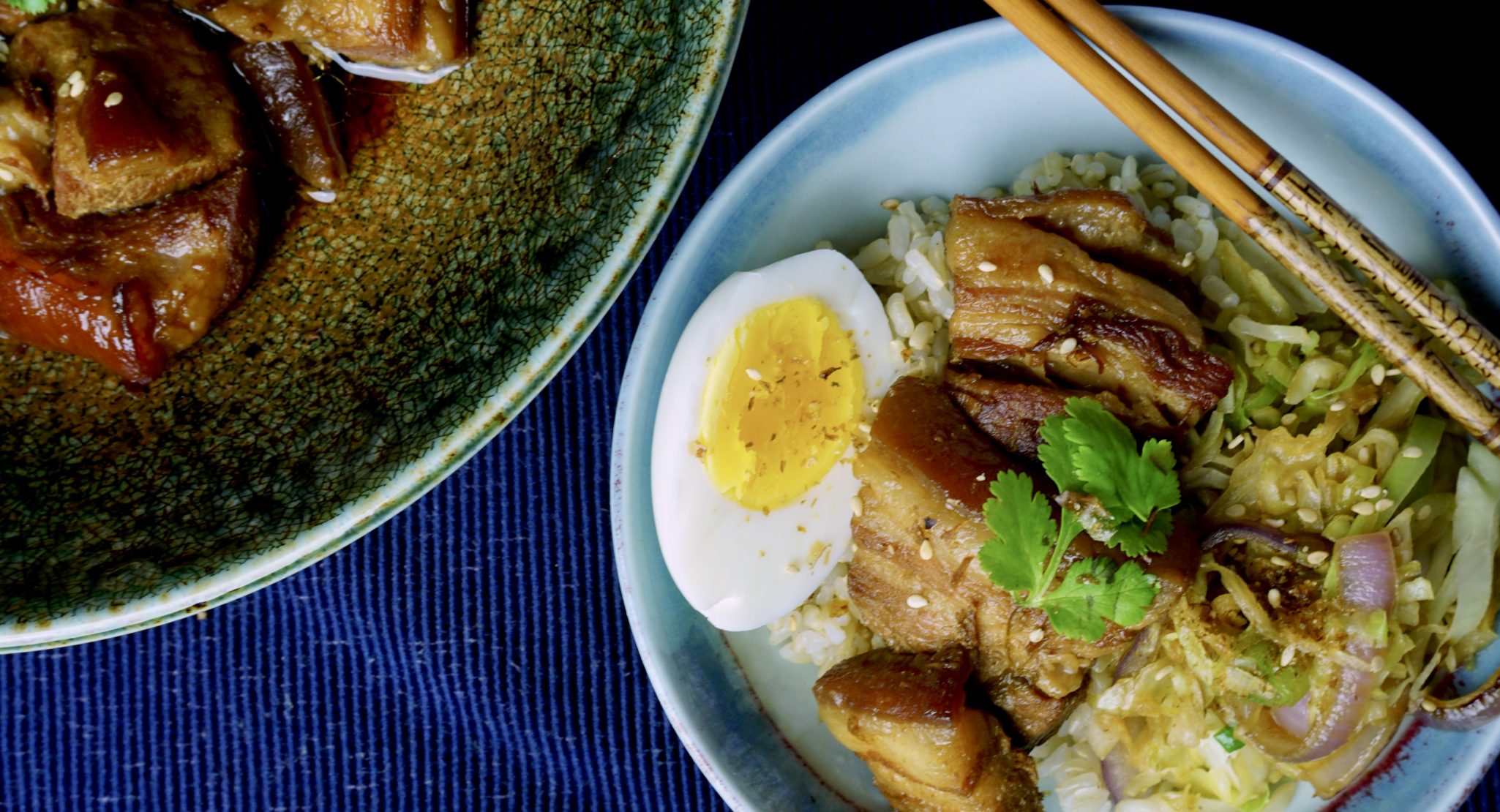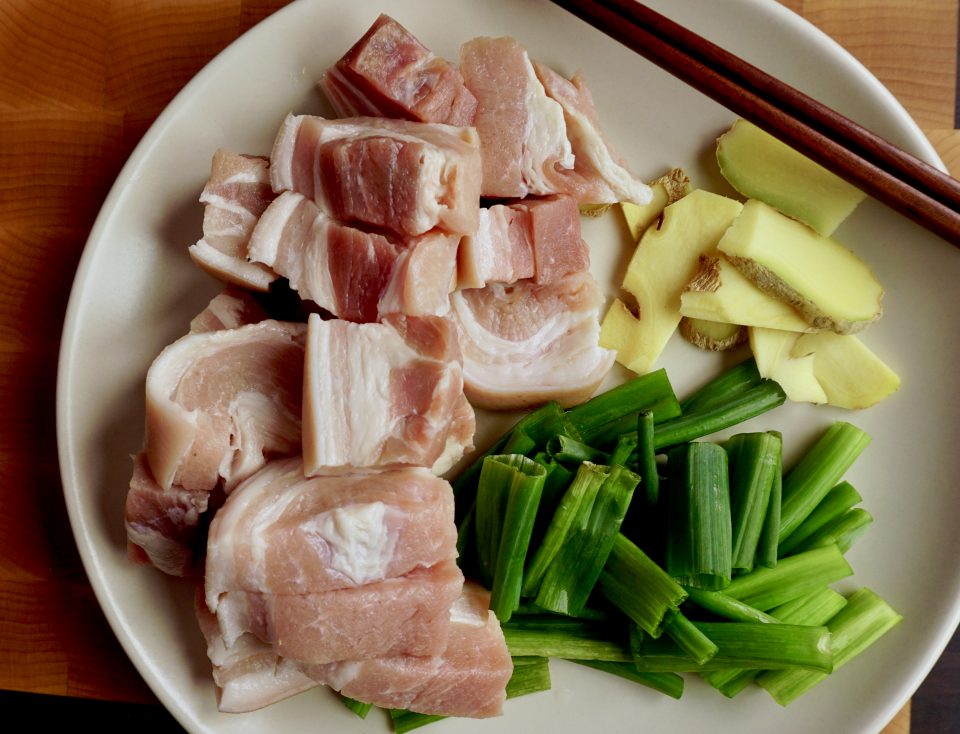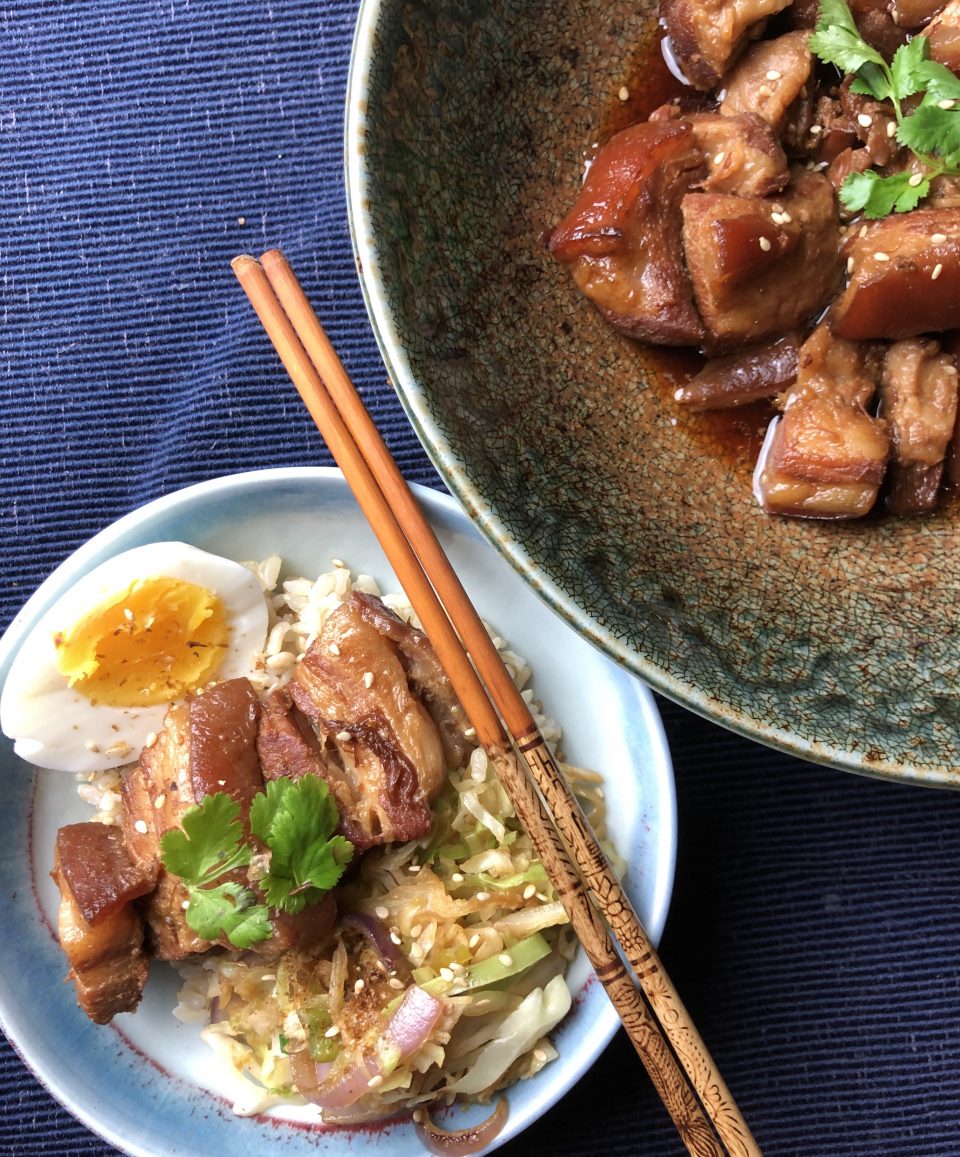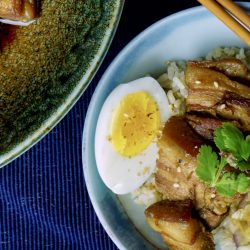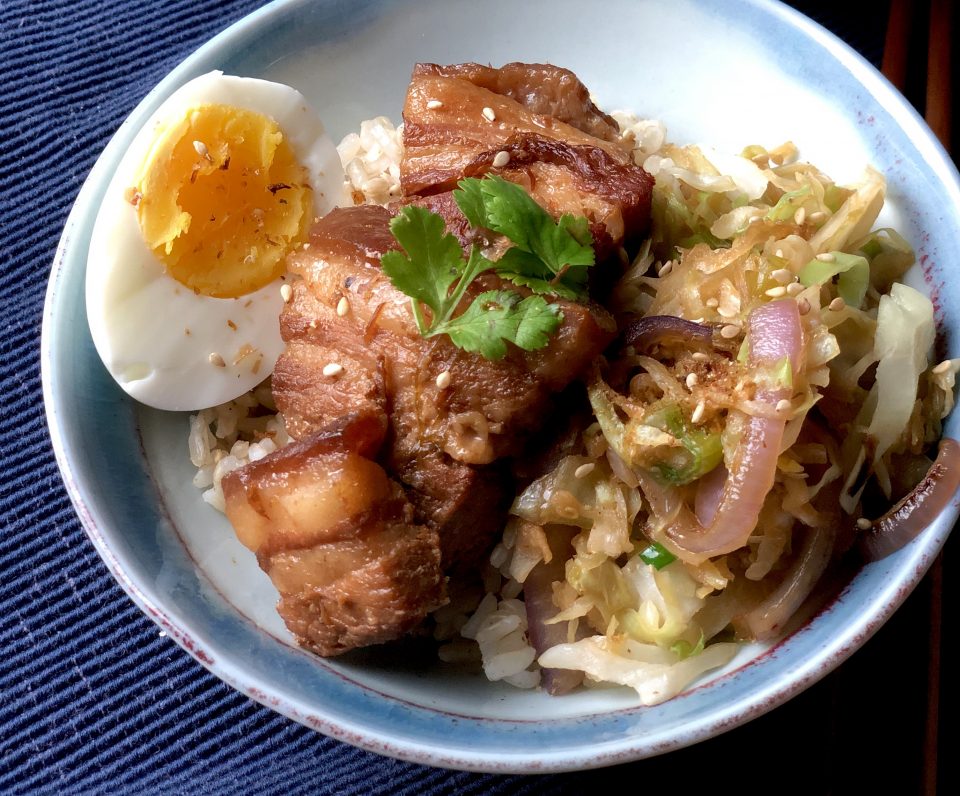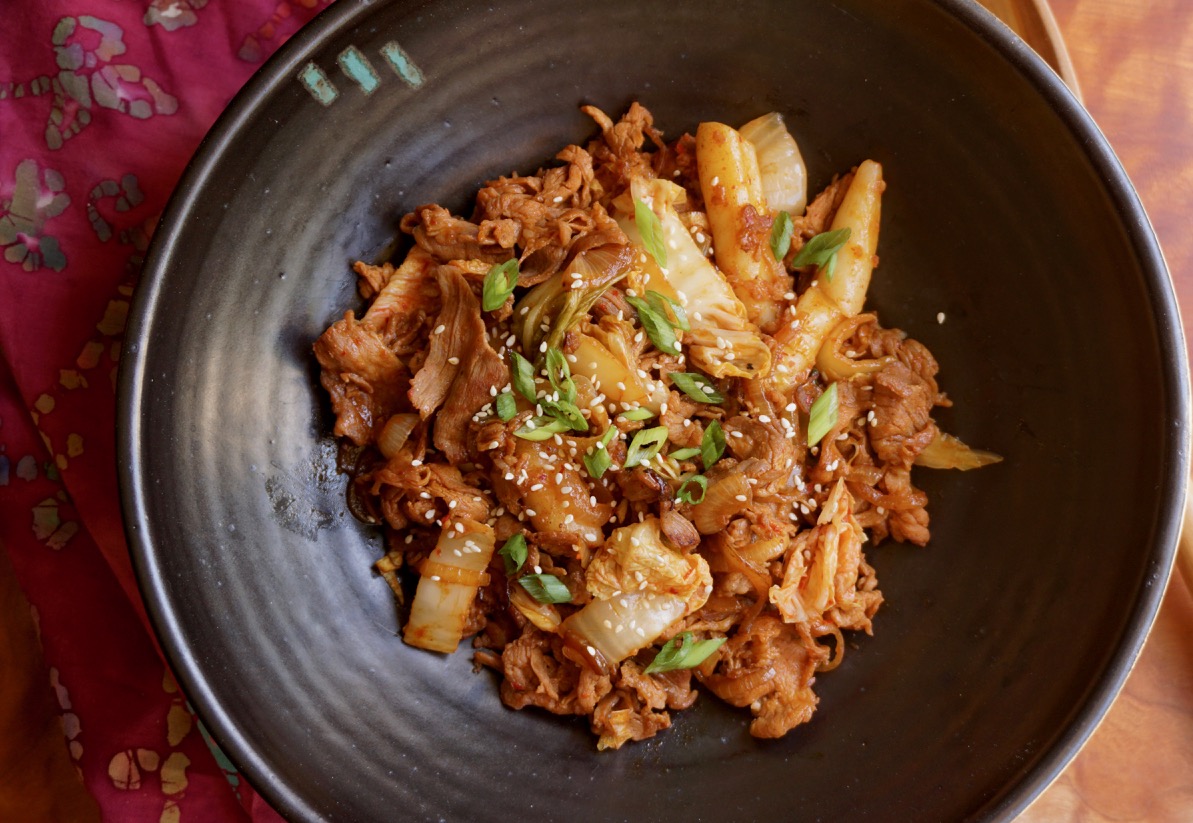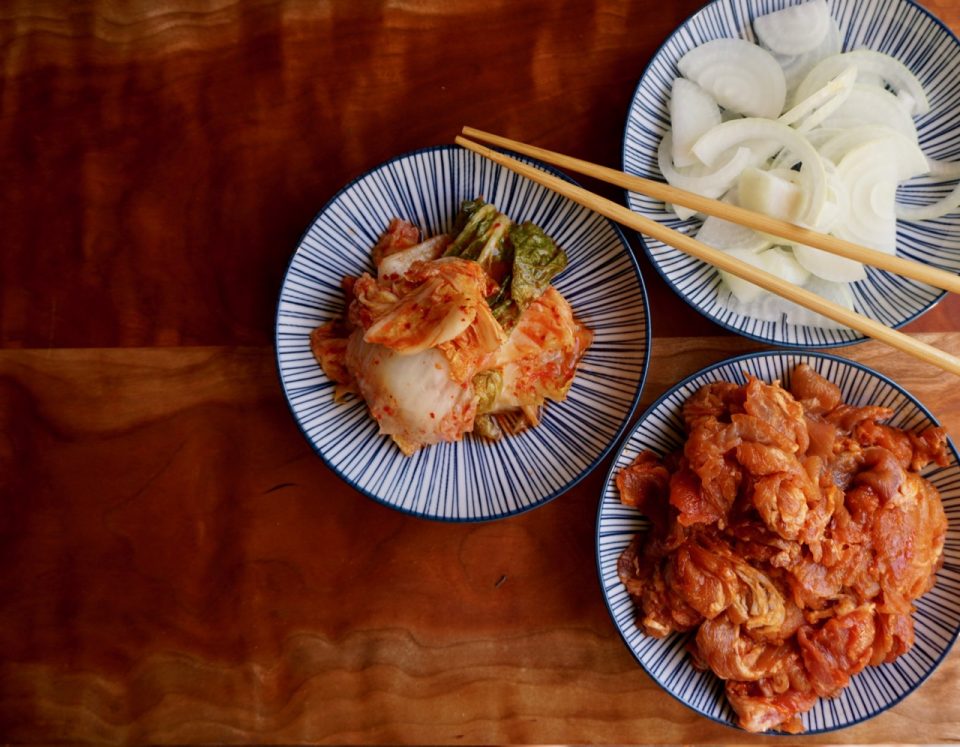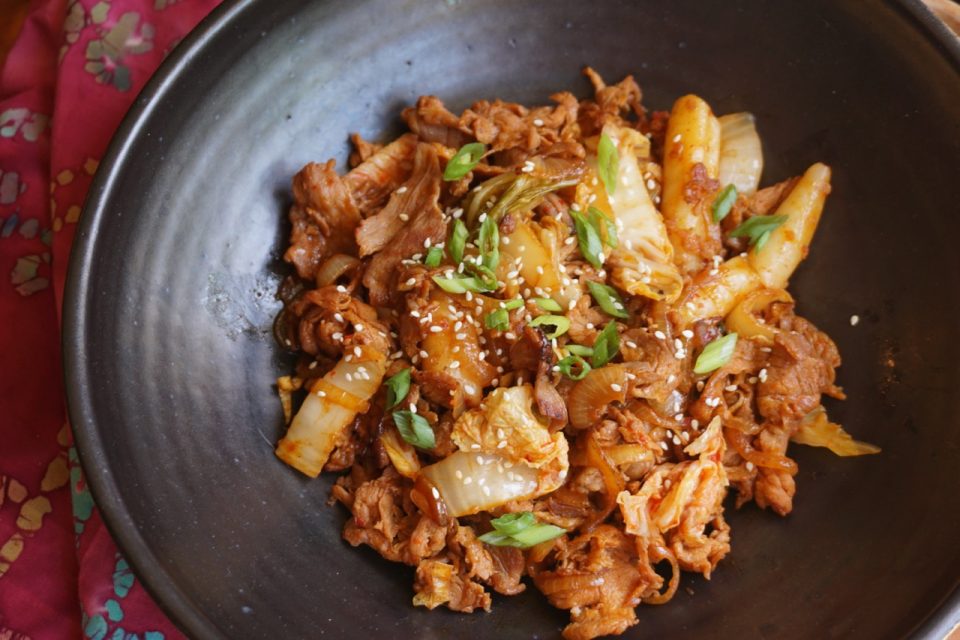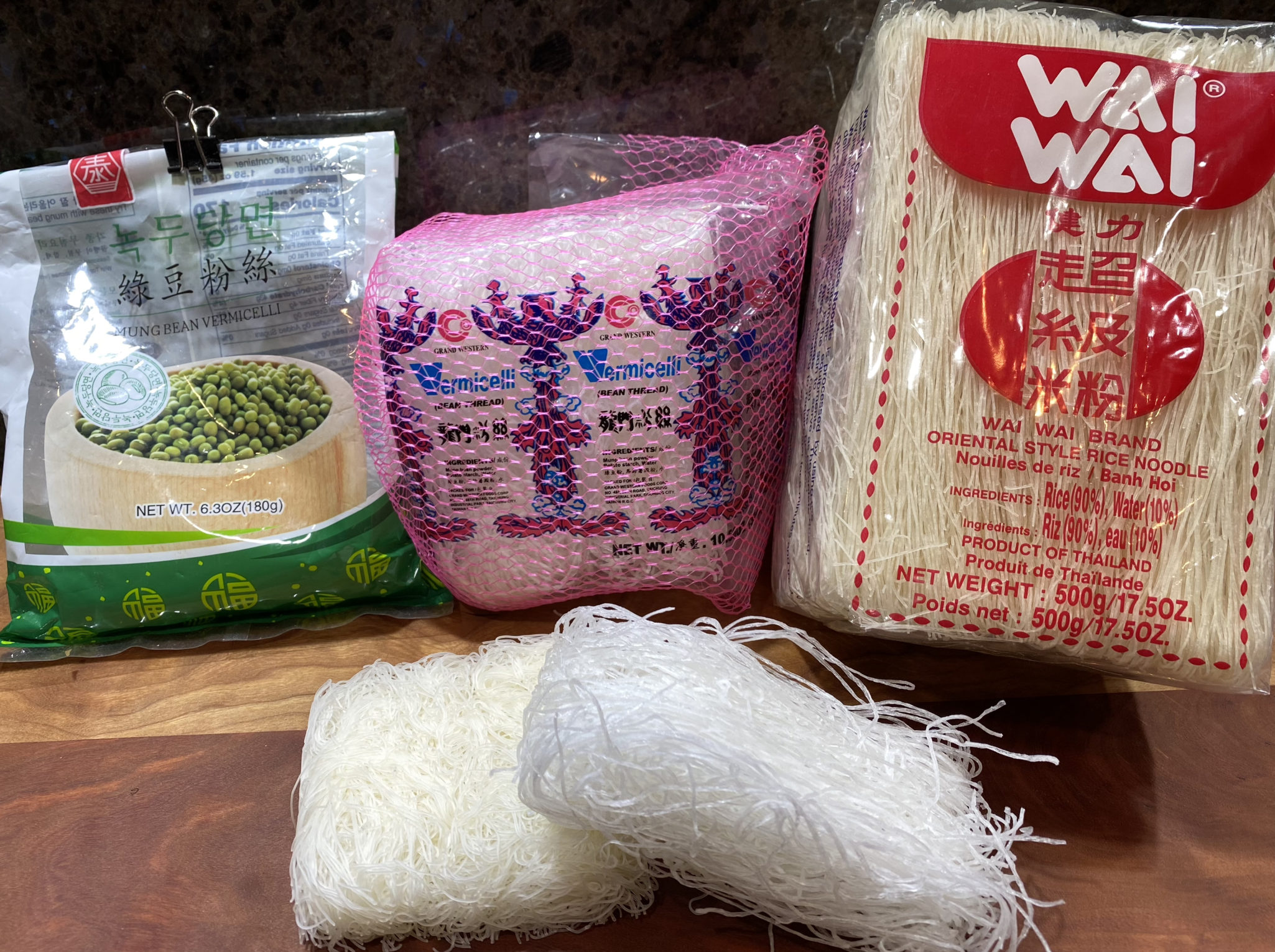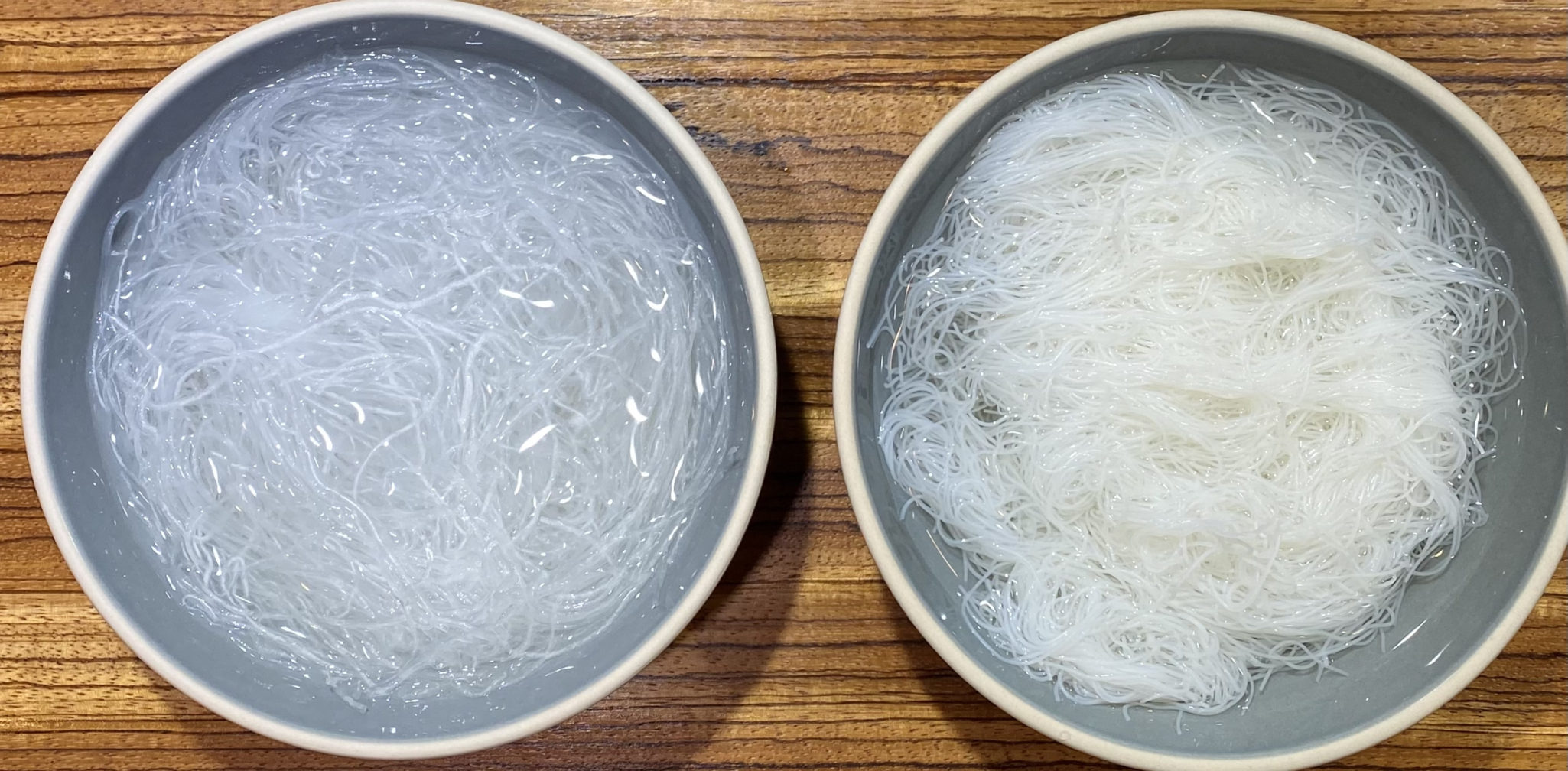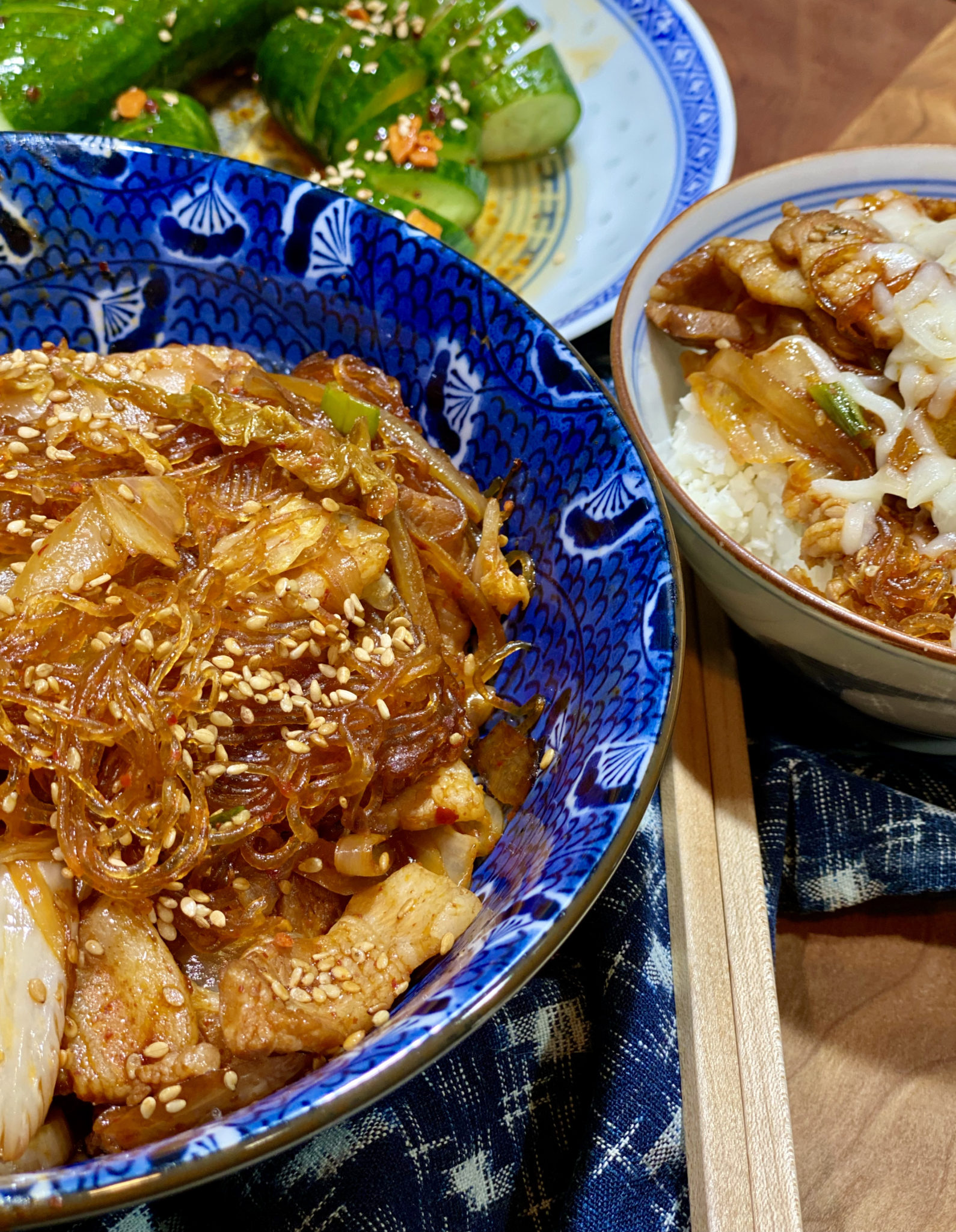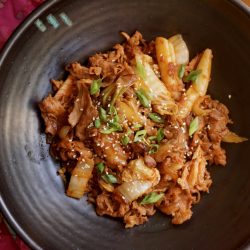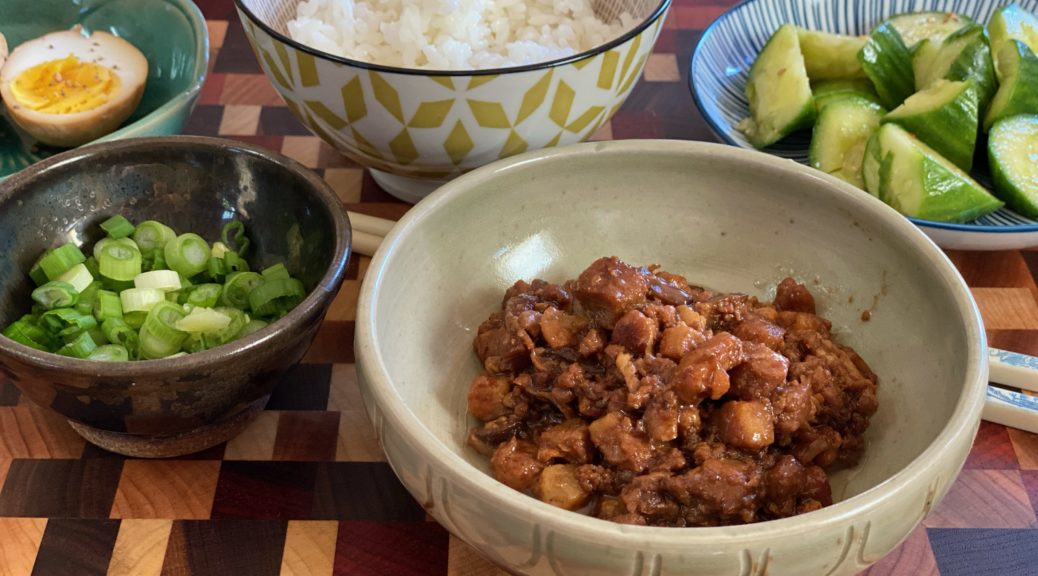
Taiwanese Pork Belly Rice Bowl (Lu Rou Fan-卤肉饭)- In Hog Heaven!
Continuing my virtual traveling by cooking, I’m imagining myself in Taipei right now. I have not been back to Taiwan in ages and yet I find myself thinking about Taipei and my visit so long ago. Growing up in San Francisco the majority of Chinese are from Hong Kong and the Guangdong (Canton) region. I was fortunate enough in college to spend a summer in Taipei (yes, on the Taiwan Love Boat Trip). I sampled Shao Lung Bao, Oyster Egg Omelets, Popcorn Chicken, Beef Noodle Soup, and Red Bean Shaved Ice while wandering around the night markets. Everything was so delicious, different from Cantonese food, and yet familiar at the same time.
Bowl Food is Soul Food
If you have followed 3jamigos, you know I have an obsession with bowl food and eating with a spoon. The Taiwanese dish Lu Rou Fan 滷肉飯 falls squarely in this category. In fact, this iconic dish was the basis for Taiwanese Turkey Rice, a favorite bowl I posted around Thanksgiving. Shreds of turkey garnished each bowl of Lu Rou Fan. People liked the turkey garnish so much, it got its own gig, Turkey Rice, the spin-off.
Back to Lu Rou Fan. Diced pork belly is braised in a soy sauce and sugar mixture seasoned with star anise, cinnamon, and aromatics like garlic, shallots, and ginger until it is melt-in-your-mouth tender. To serve, place a generous scoop of the braised pork, half of a hardboiled egg, and greens on top of steamed rice. Grab your spoon and dig in, bowl food is soul food.
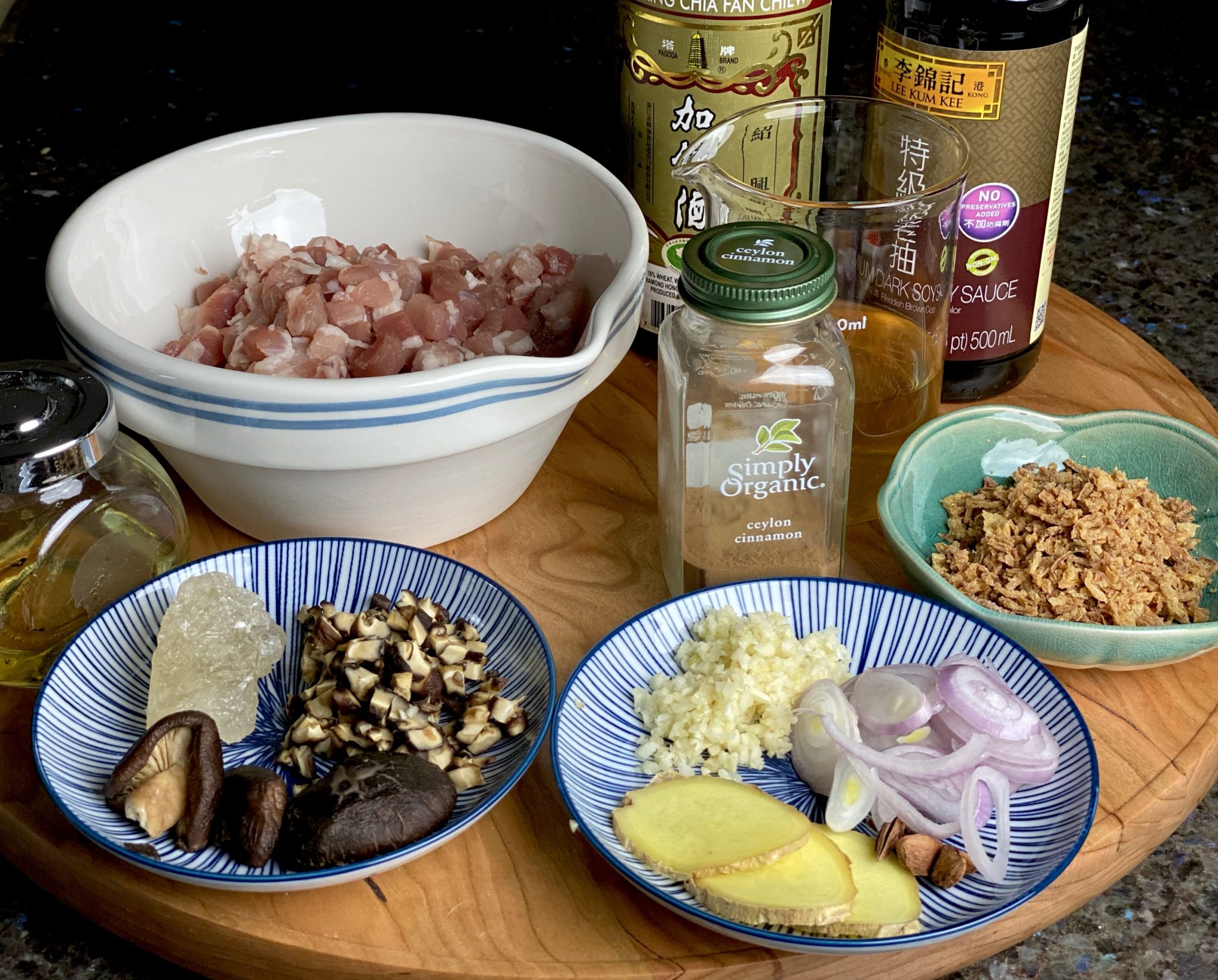 After surveying different sites for Lu Rou Fan, my version is a mash-up of recipes I found. The non-negotiables are pork, ginger, shallots, garlic, and a stock flavored with star anise, soy sauce, sugar, and rice wine. Start with pork belly cut into approximately 1/3 inch slices then diced. Thick slab pork belly can be found in most Asian grocery stores. I also add ground pork to the diced pork belly for a saucier texture, like a ragu’. Shiitake mushrooms are used to pump up the umami. Dried shrimp is also a flavor booster (it’s optional; if you decide to use it, soak and finely mince it before adding). I have mentioned my lack of affinity for star anise, so I use only one clove and add a cinnamon stick instead. If you like star anise feel free to use two. Last but not least…
After surveying different sites for Lu Rou Fan, my version is a mash-up of recipes I found. The non-negotiables are pork, ginger, shallots, garlic, and a stock flavored with star anise, soy sauce, sugar, and rice wine. Start with pork belly cut into approximately 1/3 inch slices then diced. Thick slab pork belly can be found in most Asian grocery stores. I also add ground pork to the diced pork belly for a saucier texture, like a ragu’. Shiitake mushrooms are used to pump up the umami. Dried shrimp is also a flavor booster (it’s optional; if you decide to use it, soak and finely mince it before adding). I have mentioned my lack of affinity for star anise, so I use only one clove and add a cinnamon stick instead. If you like star anise feel free to use two. Last but not least…
Pull Out the Instant Pot!
The pressure cooker reduces the effort and time needed to make Lu Rou Fan, a win-win. Saute the pork, add the aromatics and liquid, and 30 minutes later, your Lu Rou Fan is ready for the finishing touches. How easy is that? Make this dish a day in advance to allow the flavors to meld and to chill the Lu Rou. Skim the solidified fat off before reheating and serving.
Finishing Touches
When the pressure cooker is done, release pressure and set the pot to saute’. Bring the pork mixture to a boil, and reduce to the desired consistency OR if the sauce is not thick enough, add a cornstarch-water mixture to thicken. You want lots of sauce to drizzle on your rice so do not reduce too much.
The star of this dish is the succulent, saucy pork belly dancing on the main stage of rice but there are supporting actors. Hard-boiled eggs often accompany Lu Rou Fan. Boil, peel, and place eggs in the pork sauce after it has finished pressure cooking. While the sauce thickens, the eggs will absorb the color and flavor of the pork. The eggs will be hard-boiled, so for those who have come to love six-minute ramen eggs, this ain’t it. Use soft-boiled instead of hard-boiled eggs to add to the sauce for a less-cooked egg. Or cook six-minute eggs ramen style and use this in place of the hard-boiled eggs. It’s your bowl of goodness, do what you want. Serve with greens such as seasoned cucumbers, or steamed bok choy or broccoli. Garnish with green onions and more fried shallots. YUMMY.
Taiwanese Pork Belly Rice (Lu Rou Fan)
Equipment
- Instant Pot
Ingredients
- 1 lb skin-on pork belly diced into 1/3 inch pieces
- 1/4 lb ground pork
- 1 tbsp vegetable oil or shallot oil
- 3 slices ginger
- 2 tbsps shaoxing wine
- 2 tbsps dark soy sauce
- 1 tbsp regular soy sauce
- 1/4 cup fried shallots or onions
- 1 shallot, finely diced
- 4 cloves garlic chopped (1.5 tbsp)
- 1 star anise
- 2-3 dried shiitake mushrooms soaked until mushrooms are softened, remove from water andnreserve soaking liquid, dice mushrooms
- 1 tbsp dried shrimps chopped OPTIONAL
- 1 stick cinnamon or 1/2 tsp ground cinnamon
- 2 tbsp rock sugar or brown sugar (30gms rock sugar_
- 2/3 cup hot water or reserved liquid from mushrooms
- Soy sauce /salt to taste
- fried shallots and green onions garnish
- 2 eggs hardboiled or cooked Ramen style
Instructions
- Turn on the "sauté" function of the pressure cooker, press "adjust" once to switch to "more" for browning.
- Once the oil is hot, add pork belly and give it a stir so that it's not sticking to the bottom. Saute' just until pork belly starts to brown, add ground pork. Let pork cook until it loses its pinkness and the liquid evaporates.
- Add ginger, shallot, garlic, saute briefly before adding soy sauces, Shaoxing wine, cinnamon, star anise, rock sugar, shiitake mushrooms, and fried shallots. Mix it well and add reserved mushroom liquid or hot water. Cover with the lid.
- Turn on the "manual" function, set the timer to 25 minutes. Allow 10 minutes before release of pressure and opening. Skim off the fatty oil from the top.
- If the sauce seems too thin, turn on the "sauté" function, and "adjust" to "more" to thicken and darken the pork belly. Saute to desired sauce thickness and color. Season with light soy sauce or salt to taste. Alternatively, taste sauce after opening the pot. If it has enough flavor but is thin, mix 1 tbsp cornstarch with 2 tbsp water. Add to mixture and bring to a boil to thicken sauce.
- Ladle the braised pork over rice with some sauce. Top with an egg* and greens of choice. Garnish with green onions and more fried shallots.
Egg
- Generally, eggs are hardboiled, peeled and added during cooking..which makes a very hard-boiled egg. I like ramen eggs or runny eggs
- Boil eggs to just past soft boiled stage. See post for link to ramen eggs. Have eggs peeled and ready to go when pork is finished cooking. Add to pork and allow to sit in sauce until you are ready to serve. Cut eggs in half and place 1/2 in each bowl of rice.
Notes
Use leaner ground pork (e.g. pork shoulder) as a substitute if the pork belly is too fatty. But really, you don’t need a ton on your rice. Reduce the cooking time accordingly.
